Visitors often visit Scotland to see iconic landmarks like Edinburgh Castle, Loch Ness, and the Kelpies. However, beyond these well-trodden paths lie Scotland’s true treasures—hidden gems brimming with magic, natural wonders, and wildlife-rich islands. This guide offers some of Scotland’s most enchanting, lesser-known destinations.
Fairy Pools

https://www.isleofskye.com/skye-guide/top-ten-skye-walks/fairy-pools Isle of Skye
The Fairy Pools on the Isle of Skye are not just natural wonders but also gateways to the enchanting landscapes of Glen Brittle. These mesmerizing aqua-blue pools, popular among wild swimmers, are nestled amidst the majestic Cuillin mountains. The journey to the pools is an adventure, offering hikers a chance to traverse through rugged terrain, with each step revealing the untouched beauty of Skye’s landscapes. The area’s rich wildlife, including red deer, rabbits, and sheep, adds to the charm of this magical destination.
Smoo Cave
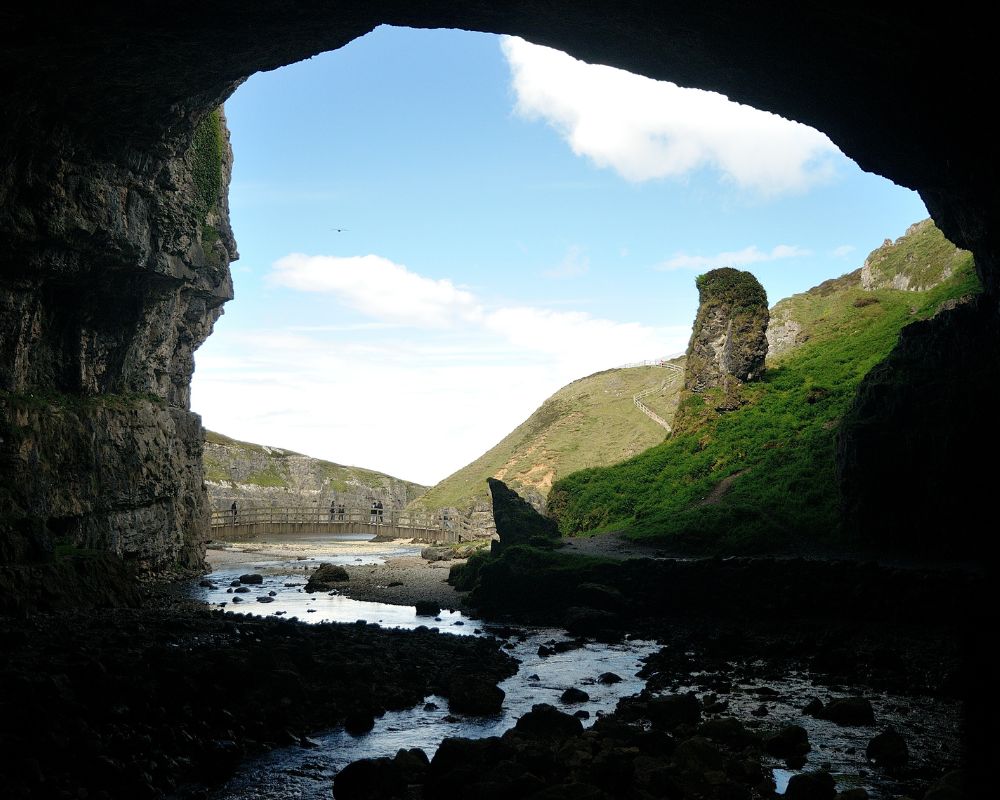
Durness, Sutherland, IV27 4QA.
Smoo Cave, a spectacular natural formation in Durness, Sutherland, is a wonder where the sea and freshwater worlds collide. Originating from the Norse word ‘smjugg’ or ‘smuga’, meaning a hole or hiding-place, it’s a site shrouded in mystery and ancient lore. The cave is unique for being both a sea cave and a freshwater cave, carved out by the actions of the ocean on the outside and a freshwater stream within. As you venture 10 minutes to the waterfall/lake chamber, you’re walking through a geological timeline, witnessing layers of history etched into the cave’s walls. Local legends speak of mythical creatures and ancient spirits, adding an air of mystique to the awe-inspiring natural architecture. Don’t miss the chance to immerse yourself in this part of Scottish geology, where every corner tells a story of the earth’s and Scotland’s past.
Loch Awe

https://www.visitscotland.com/info/see-do/loch-awe-p2569721
Argyll and Bute
Loch Awe, a stunning expanse of freshwater in Argyll and Bute, is more than just a picturesque Scottish Highlands destination. It’s a place steeped in history and lore, with its shores dotted by ancient ruins and quiet villages. One of its most iconic landmarks is Kilchurn Castle, a 15th-century structure majestically perched at the loch’s edge, offering a glimpse into Scotland’s medieval past. The loch is also shrouded in local legends, including tales of kelpies and other mystical creatures said to inhabit its waters. Surrounded by wooded hillsides and rugged terrain, Loch Awe offers a tranquil escape where history and legend intertwine amidst breathtaking natural beauty.
Union Canal

https://www.scottishcanals.co.uk/visit/canals/visit-the-union-canal
The Union Canal, stretching from Falkirk to Edinburgh, is a testament to Scotland’s rich industrial heritage. Originally built to transport coal, this historic waterway now offers a serene escape through the heart of Scotland. As you travel along the canal, you’ll be greeted with a tapestry of urban landscapes and lush greenery, showcasing a unique blend of Scotland’s past and present. The canal’s banks teem with wildlife, offering glimpses of herons, kingfishers, and otters amidst the tranquil waters. The journey is punctuated by impressive engineering feats like the Falkirk Wheel, the world’s only rotating boat lift, and aqueducts that gracefully carry the canal over valleys and rivers. This route is not just a journey through Scotland’s scenic beauty but a voyage through its evolving story, from an industrial lifeline to a haven of natural tranquillity and historic charm.
Moray Coast

https://www.visitscotland.com/info/see-do/moray-firth-p2570111
The Moray Firth is not just a haven for its famous resident dolphins but also a gateway to some of Scotland’s most picturesque coastal landscapes. Stretching along the north and east of Inverness, this area is renowned for its scenic coastal walks that weave through historic fishing villages and rugged cliffs. The Moray Coast Trail offers a journey through time, revealing charming villages like Findhorn and Portknockie, each with its own story and unique appeal. As you explore, the coastline unveils serene beaches, dramatic rock formations, and hidden coves. Alongside the natural beauty, the trail provides a rich cultural experience, reflecting the region’s fishing heritage and maritime legacy. The Moray Coast is a blend of natural splendour and historical intrigue, making it an ideal destination for those seeking to experience the true essence of Scotland’s coastal beauty.
Logan Botanic Garden

https://www.rbge.org.uk/visit/logan-botanic-garden/
Port Logan, Stranraer
Logan Botanic Garden, nestled in the southwestern tip of Scotland, is a remarkable display of subtropical flora thriving under the temperate influence of the Gulf Stream. This garden is a living tapestry of exotic plants worldwide, including rarities from South and Central America, Southern Africa, Australia, and New Zealand. Visitors can marvel at the vibrant array of half-hardy perennials and wander among collections that change with the seasons, offering a unique spectacle throughout the year. Key highlights include the lush walled garden, which transforms into a riot of colour and scent in summer, and the Discovery Centre, where one can delve deeper into the garden’s diverse species. Logan’s warm microclimate allows for a surprising variety of plants to flourish, making it a paradise for plant enthusiasts and a tranquil retreat for all visitors.
Highland Folk Museum
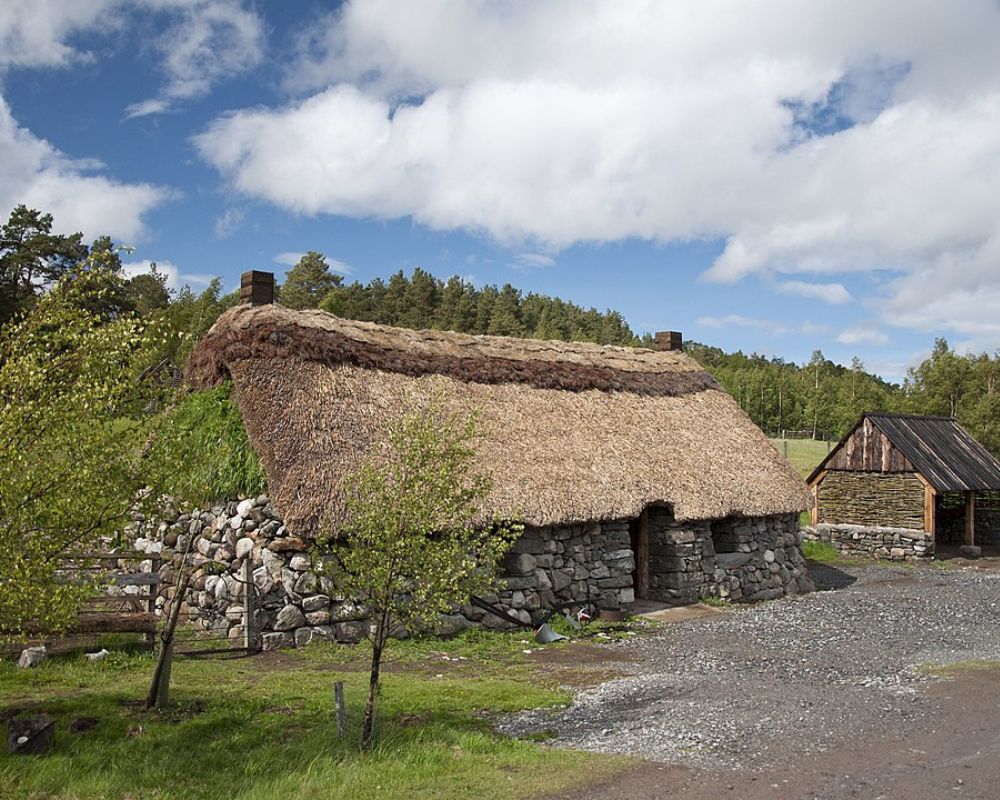
Aultlarie Croft, Kingussie Rd, Newtonmore
The Highland Folk Museum in Newtonmore offers a captivating journey back in time, showcasing Highland life from the 1700s to the 1950s. Spread over a vast area, the museum features over 35 historical buildings, each telling its own story of rural and domestic life in the Highlands. Visitors can immerse themselves in interactive exhibits, from traditional blackhouses to a working croft, providing a tangible connection to Scotland’s past. Special events and demonstrations, including traditional crafts and Highland games, bring the history to life, making it an engaging experience for all ages. The museum’s commitment to preserving the rich cultural heritage of the Highlands makes it a unique and insightful destination for those interested in understanding Scotland’s rural history.
Dunmore Pineapple
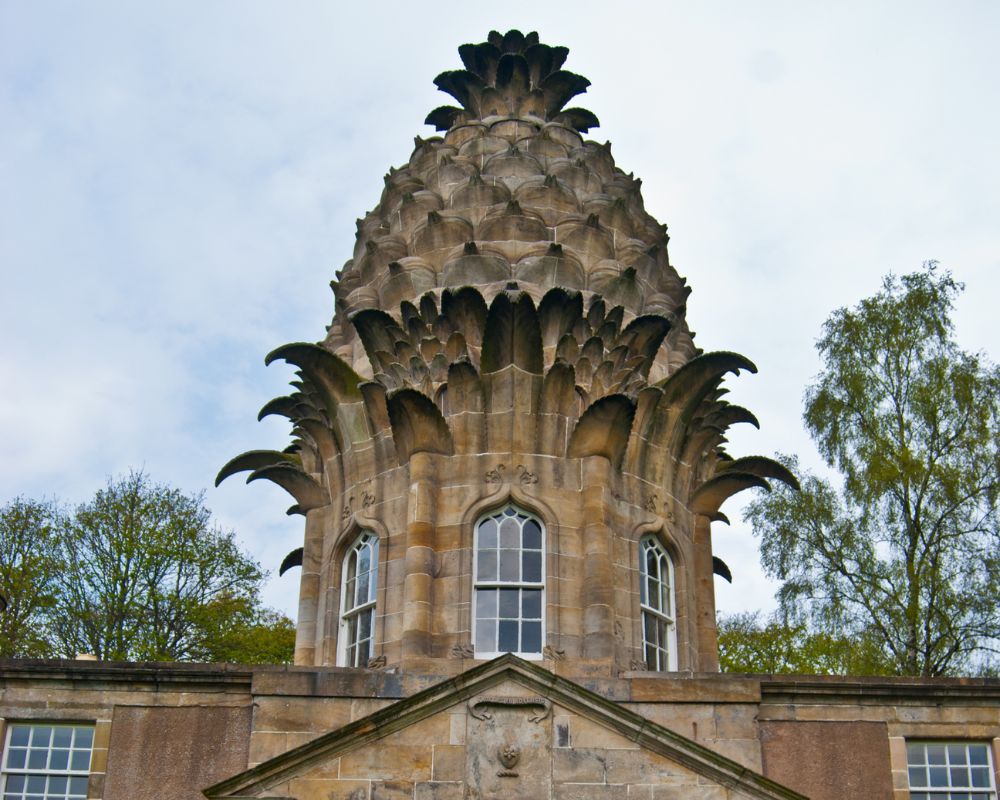
https://www.nts.org.uk/visit/places/the-pineapple
Falkirk FK2 8LU
The Dunmore Pineapple, a remarkable folly in Falkirk, stands as a testament to the eccentricities of 18th-century architecture. Built-in 1761 by the Earl of Dunmore, its most striking feature is the elaborate pineapple structure crowning the building, symbolizing hospitality and wealth. This architectural wonder, unique in its design, reflects the fascination with horticulture and exotic fruits of the era, particularly pineapples, which were a luxury item. Surrounded by extensive gardens that once showcased a variety of fruits and vegetables, the Pineapple is set within a tranquil landscape that now serves as a haven for wildlife. Its combination of whimsical design and historical significance makes the Dunmore Pineapple a unique and intriguing piece of Scottish heritage.
Fingal’s Cave
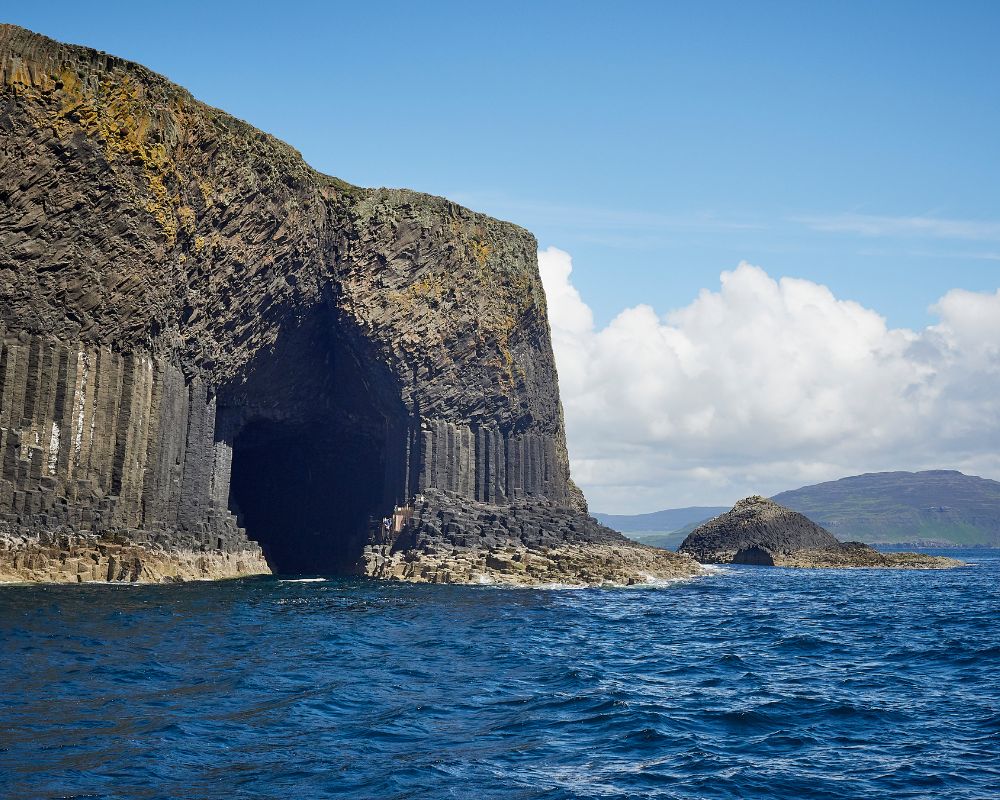
https://www.wildaboutargyll.co.uk/blogs/how-to-visit-fingals-cave-and-why-you-need-t o/
Isle of Staffa
Fingal’s Cave, a marvel on the uninhabited Isle of Staffa in the Inner Hebrides, is famed for its imposing basalt columns and oceanic acoustics. This sea cave, known in Gaelic as ‘An Uamh Binn’ (the melodious cave), captivates visitors with its natural cathedral-like structure, formed entirely of hexagonal basalt columns similar to Northern Ireland’s Giant’s Causeway. The cave’s unique structure creates an awe-inspiring visual experience and gives rise to its extraordinary acoustics, often likened to a natural cathedral. Accessible by boat, the journey to Fingal’s Cave is an adventure, offering a chance to experience the rugged beauty of Scotland’s seascape. The echoes of the waves inside the cave have inspired many, including composer Mendelssohn, who immortalized it in his ‘Hebrides Overture’. This geological wonder is a testament to nature’s artistry, making it a must-visit for those exploring Scotland’s natural heritage.
St Kilda

https://www.nts.org.uk/visit/places/st-kilda
St Kilda, a UNESCO World Heritage site, is an extraordinary archipelago in the Outer Hebrides, offering an unparalleled glimpse into remote island life. Known for its towering cliffs and sea stacks, St Kilda is a haven for thousands of seabirds, including the UK’s largest colony of Atlantic puffins. Its isolation 64 kilometres west-northwest of North Uist has preserved a unique way of life, with evidence of human occupation dating back thousands of years. The remnants of ancient stone buildings whisper tales of a community that once thrived in this harsh yet mesmerizing environment. Today, St Kilda is not only a wildlife enthusiast’s paradise but also a fascinating site for those interested in the resilience and ingenuity of early Scottish settlers. This remote destination encapsulates the raw beauty and historical depth of Scotland’s natural and cultural heritage.
Outer Hebrides
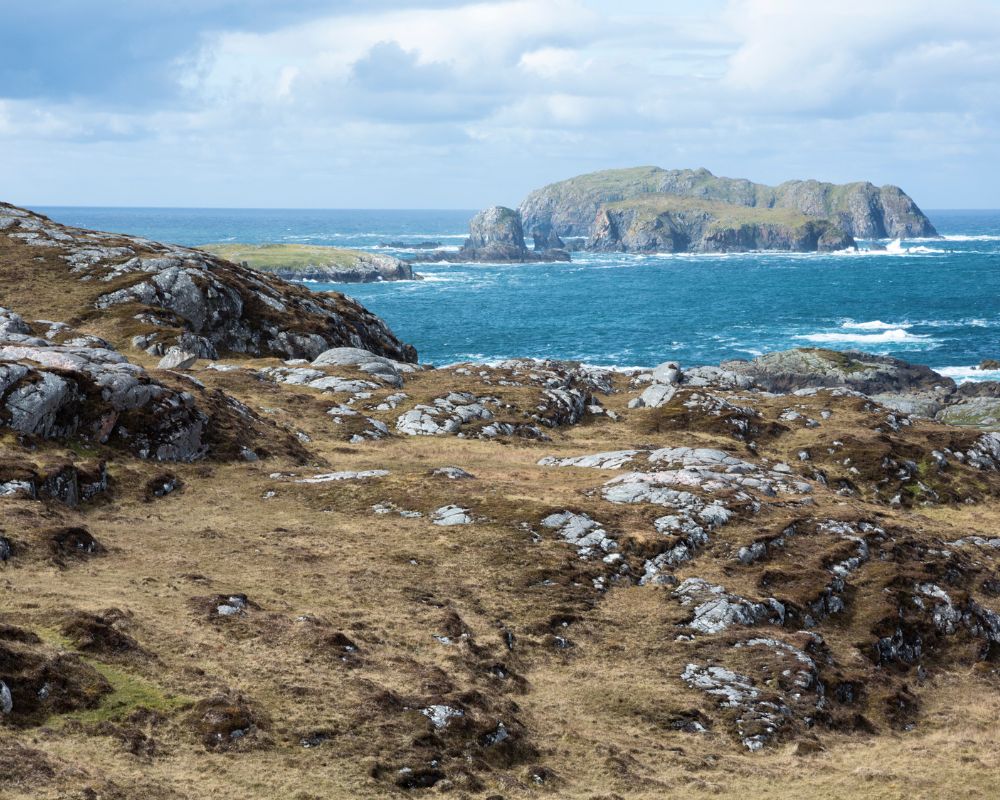
The Outer Hebrides, a string of islands off Scotland’s west coast, offers a unique blend of breathtaking landscapes and rich cultural heritage. Known for their rugged beauty, these islands boast pristine beaches, rolling moorlands, and tranquil lochs, each presenting a slice of Scotland’s natural splendour. The culture here is deeply rooted in Scottish traditions, with Gaelic spoken widely and ancient historical sites dotting the landscape. Visitors can immerse themselves in a world where traditional music, crafts, and folklore are woven into the fabric of everyday life. The Outer Hebrides is not just a destination; it’s an experience of serene beauty and cultural richness, now gaining attention through social media for its untouched and majestic scenery.
Handa Island, Inner Hebrides

Handa Island, nestled in Scotland’s Inner Hebrides, is a sanctuary for bird enthusiasts. This ruggedly beautiful island offers a rare opportunity to observe a rich array of seabirds, including puffins, guillemots, and skuas, in their natural habitat. The dramatic cliffs of Handa serve as the perfect backdrop for these birds, creating a spectacle of nature that is both awe-inspiring and serene. The island’s accessible walking trails allow visitors to explore its diverse landscape and get up close to the bird colonies, making it an ideal destination for those seeking a blend of wildlife and scenic beauty in a tranquil setting.
Bealach na Bà, Applecross

Bealach na Bà, part of the scenic North Coast 500 route in the Scottish Highlands, is a breathtaking drive known for its sharp twists and steep inclines. Often regarded as one of the most dramatic roads in Scotland, it weaves its way through the rugged Applecross Peninsula, offering unparalleled views of the surrounding landscapes. With its challenging terrain, this historic pass is a favourite among driving enthusiasts and adventure seekers. As you ascend to its highest point, you’re rewarded with stunning panoramic views that encapsulate the wild beauty of the Highlands. Bealach na Bà is more than just a road; it’s a journey through some of Scotland’s most spectacular and untamed natural scenery.
Scotland’s hidden gems are as diverse as they are numerous, offering something for every kind of explorer. From the serene Fairy Pools on the Isle of Skye to the dramatic cliffs of St Kilda, these lesser-known destinations promise an unforgettable Scottish adventure. Remember to respect the natural beauty of these sites and leave them as pristine as you found them, ensuring they remain hidden gems for generations to come.
For more information on these locations, please visit their websites linked in the article.

